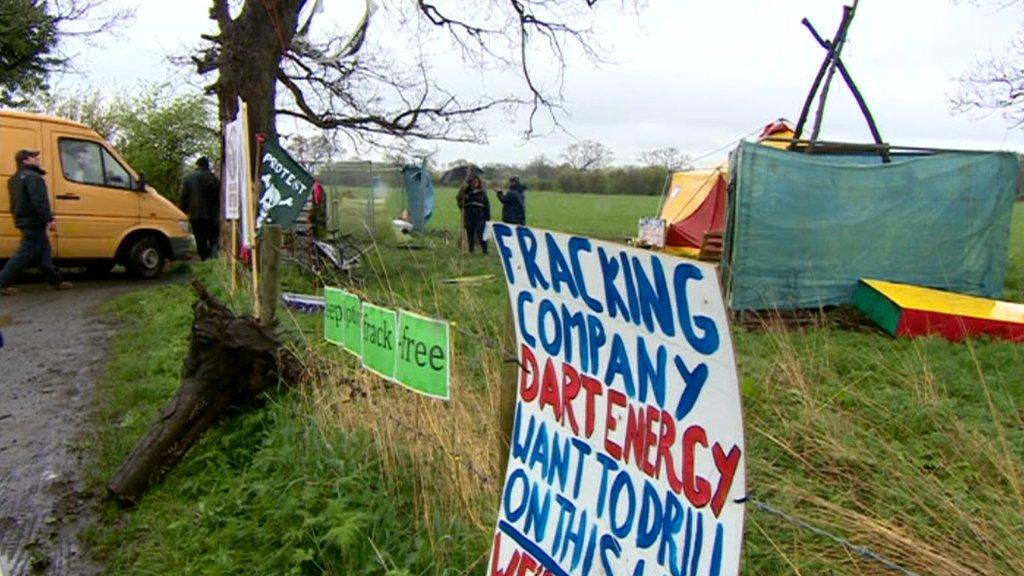Cheshire anti-fracking protesters dig in for eviction fight
- Published
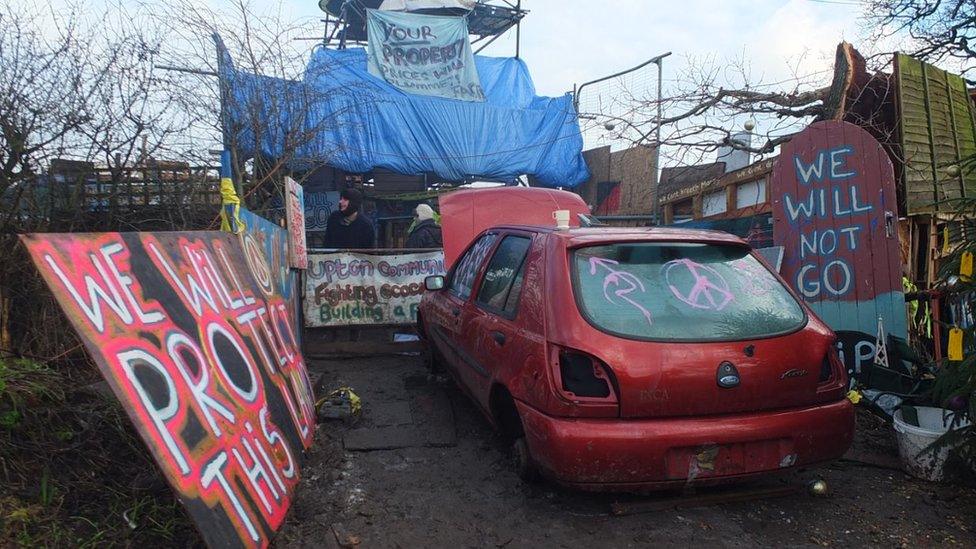
Protesters remain at the site in Upton, near Chester, despite a court order which required them to leave more than a month ago
A group of anti-fracking protesters have bolstered their campsite with an elaborate network of tunnels, walls and even a moat as they continue to defy efforts to evict them.
The campaigners set up camp at Upton, near Chester, in April 2014 to prevent testing on the site by energy company IGas.
For more than a month, they have had no legal right to remain there, after a court order was served in November compelling them to leave.
But they remain stubbornly in place, flags waving and braziers burning.
And, as they anticipate their likely eviction, the campers have constructed an elaborate series of obstacles, fortifications and means of evading the authorities.
They have surrounded the site with wooden walls and a crude moat, as well as digging tunnels and constructing makeshift towers to provide safe havens.
One protester said the aim was to instigate a potentially dangerous "game of mousetrap" when the bailiffs arrive.
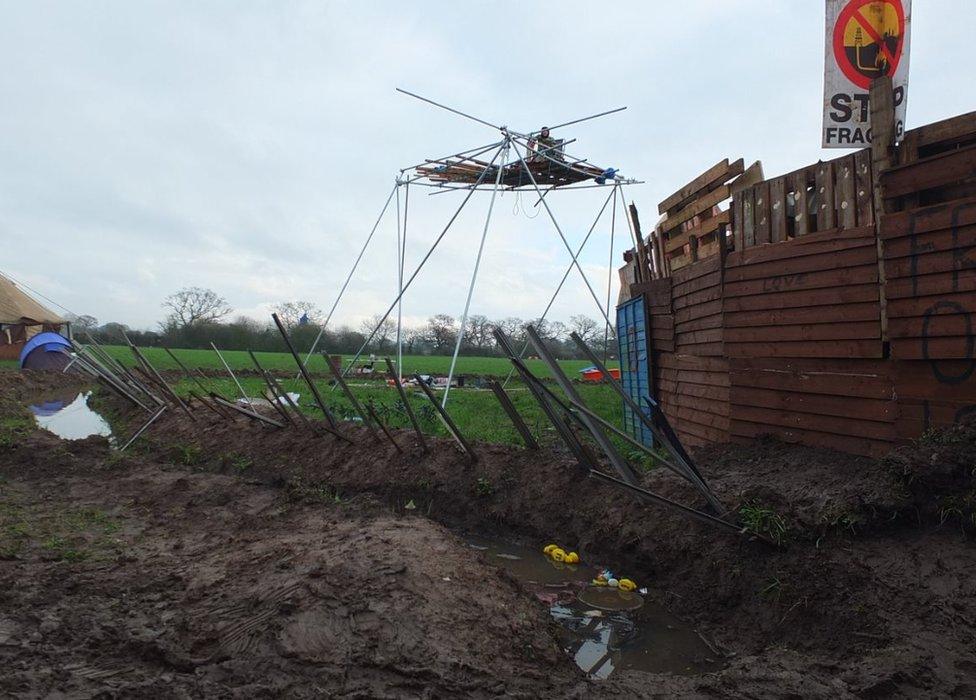
The campsite includes a crude moat, wooden walls, and towers
Meanwhile, the longer the activists remain, the less time IGas has to exploit the planning permission timeframe it has to run tests - it expires on 28 May.
Adam is one of the campers, and like all of them he knows exactly what to do when the bailiffs and police finally come knocking.
He has the job of shimmying up an intentionally-flimsy tower made of scaffolding, and locking himself on to it by the neck and arms.
"It's made to make it harder for the bailiffs to get to us," he said.
The tower is built to support the body weight of no more than one person, and when it is suggested that he could be putting his life in danger, he confidently replies: "Well yeah, of course I am.
"We can't let this stuff happen. It's my life saving a thousand lives."
'Cave-in risk'
Then there are the underground tunnels.
The site is pockmarked with small metal manhole covers, concealing a network of passageways which are expanding by the day.
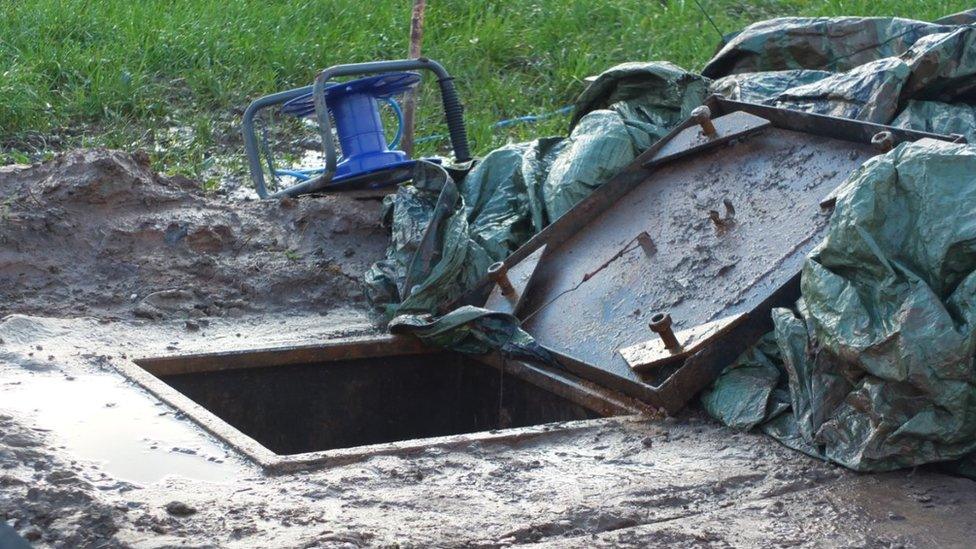
The protesters have built a network of underground tunnels at the site
It is difficult to verify how extensive the network is, but the campers say it provides plenty of space for a large number of people to lock themselves inside when the bailiffs arrive.
One of the spokesmen for the site, Dr Steven Peers, is very confident about how long they can last.
"We believe we can hold this for a significant period - weeks if not months," he said.
And, he explains, there is a much bigger risk for those trying to remove them.
"It's a clay area so the tunnels themselves are very stable but if you start putting heavy plant machinery on top of it you'd seriously risk a cave-in."
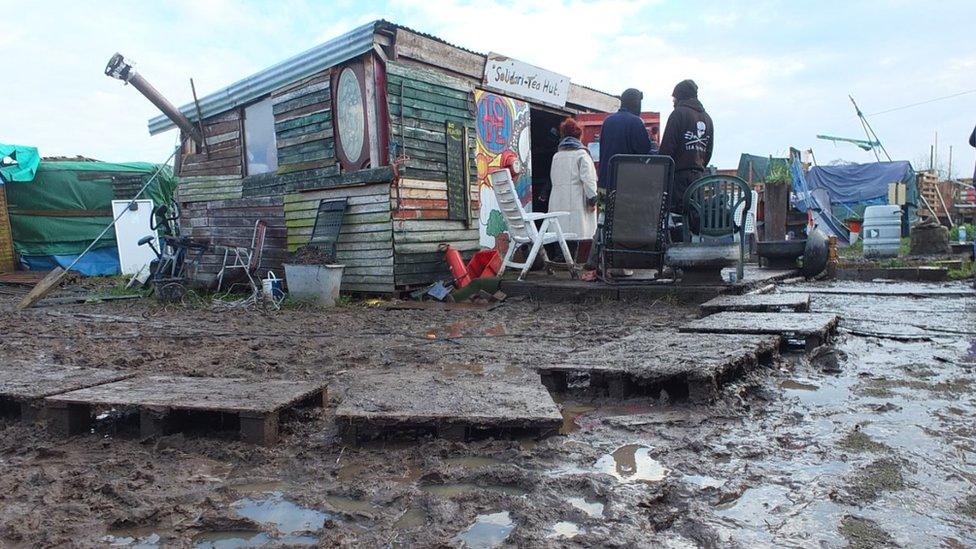
The anti-fracking campaigners are objecting to an energy company's plans to test drill on the site
Although IGas has gone to the expense of taking legal action to remove the campaigners from its mud-covered land, the company may now have a more expensive and dangerous job on its hands to exercise its rights.
A short statement from the firm said: "Whilst we respect the right to peaceful protest, these protesters are trespassing and we do not condone any activity that is illegal."
Judge David Hodge QC agreed with the firm when, in November 2015, he granted their application to repossess the land.
He ruled that there was "no reason peaceful protest can't take place without the occupation of the land".
The protest has been peaceful so far.
But local councillor and anti-fracking activist Matt Bryan admits the aim is to make the eviction process as dangerous as possible.
He said: "It's a giant game of mousetrap, and if the bailiffs or the police get this wrong, somebody's going to be seriously injured at best."
- Published6 November 2015
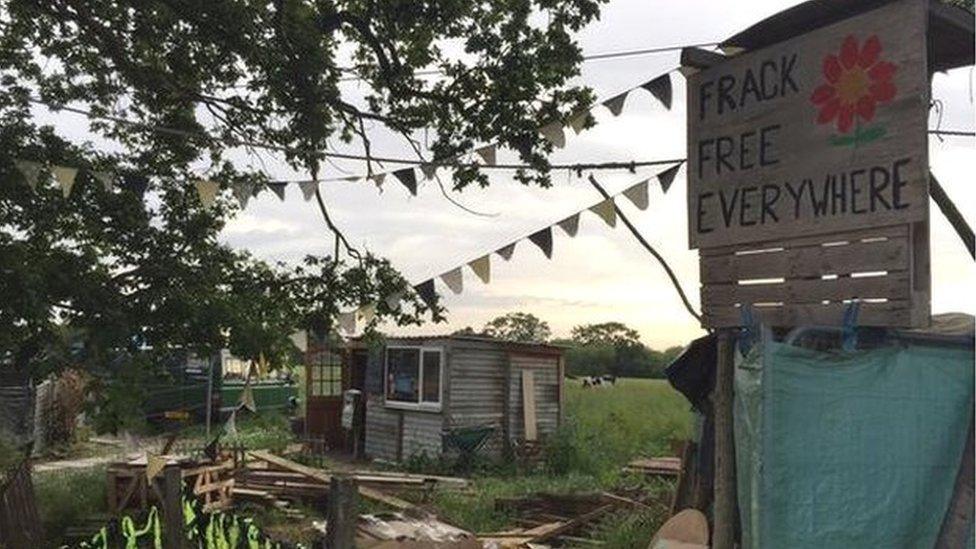
- Published8 April 2014
